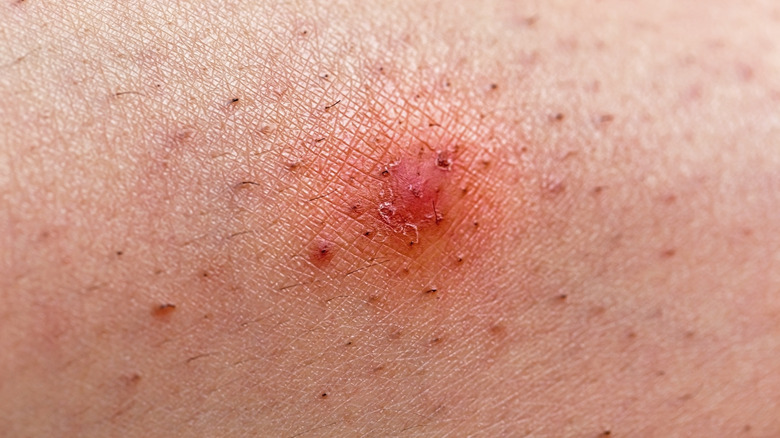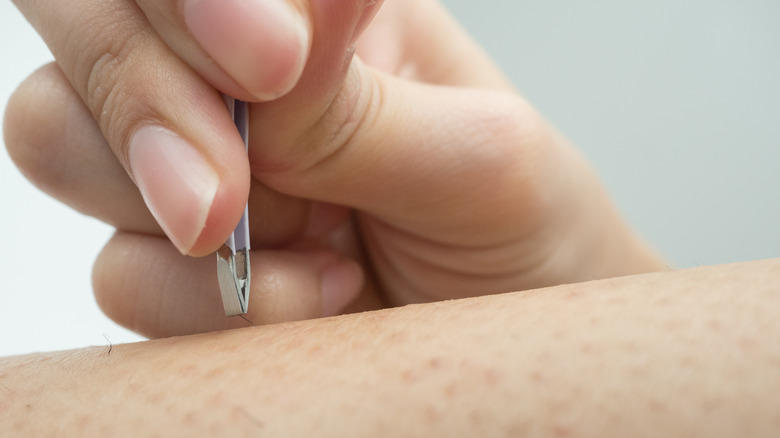When To See Your Doctor About An Infected Ingrown Hair
Often found along the legs, face, underarms, or pubic region, an ingrown hair is a single hair that has grown back down under the skin rather than upwards and outwards, explains the Cleveland Clinic. Usually the result of tweezing, waxing, or shaving, these small bumps can be itchy and painful. While certainly irritating, ingrown hairs generally take care of themselves within a week or two. However, there are instances in which an ingrown hair can become infected. Here's what to be on the lookout for to help determine when it's best to see a doctor.
Ingrown hairs that have become infected may appear red in color, grow in size, or feel warm to the touch, according to Healthline. Sometimes accompanied by pus, you may also experience itching and swelling on the surrounding skin. In some cases, an ingrown hair may progress to an ingrown hair cyst (via Medical News Today). Varying in size and appearance, an ingrown hair cyst may be large or small, deep beneath the skin or situated right on the surface, and may come with a white or yellow head. If infected, the cyst will likely be painful.
Why you should think twice before removing an infected ingrown hair yourself
Although there are at-home treatment methods one can utilize for the occasional mild infection of an ingrown hair, a doctor should be consulted if the infection persists or worsens within the following days (per Healthline). Prescription medications may be necessary to help fight the infection and remove the hair. In severe cases, the Cleveland Clinic notes that laser hair removal or electrolysis may be suggested. It's important to refrain from attempting to remove an infected ingrown hair yourself, as picking, popping, or digging at the hair with tweezers can worsen the infection or cause it to spread, cautions Healthline. In severe cases, this can lead to follicle damage, hair loss, scarring, and more. Rather, work on exfoliating the area with soap and warm water to help work the hair out of the skin by itself.
Of course, exercising prevention is the best way to safeguard against developing an infected ingrown hair. Therefore, be sure to clean the skin with soap and water prior to shaving. In addition, utilize shaving cream or gel, and be sure to shave in alignment with the direction of hair growth. Remember to use a single-blade razor, notes the Cleveland Clinic, and to rinse off the razor before each new stroke. You'll also want to make sure you're regularly replacing the razor or the razor blade to prevent cuts from dull blades.


